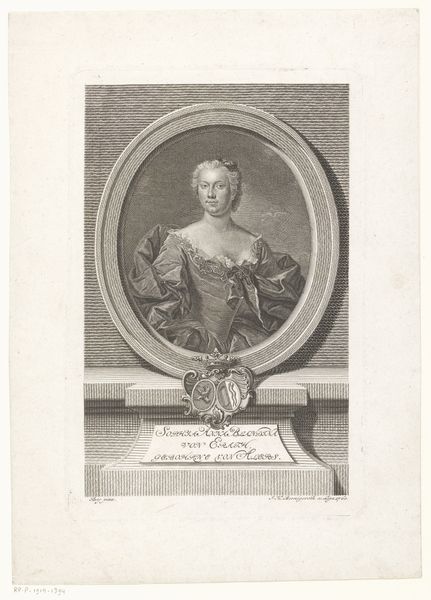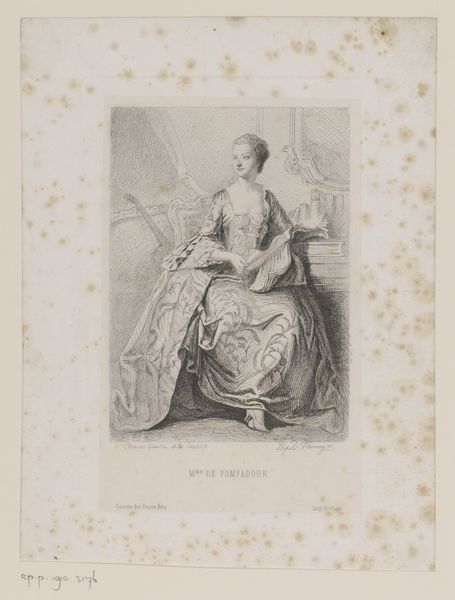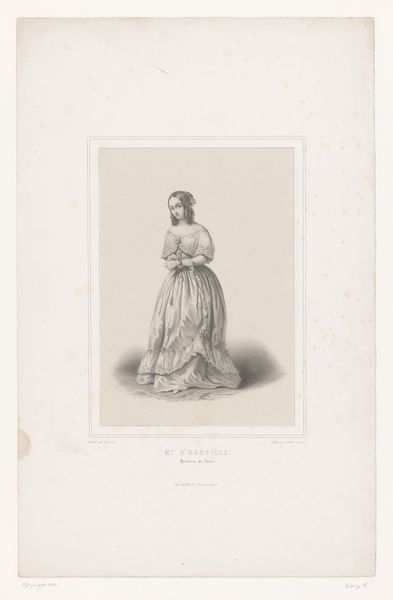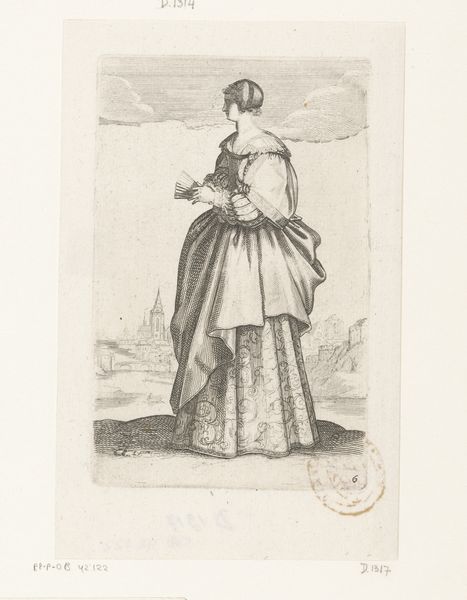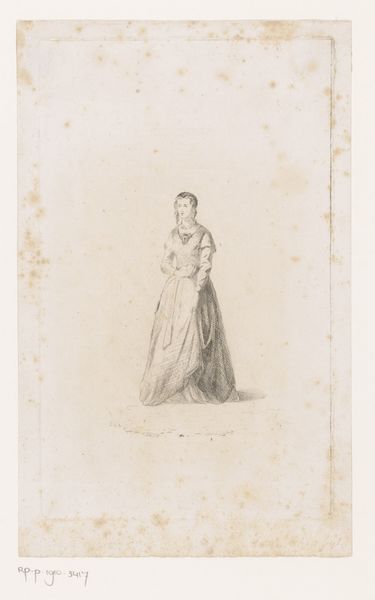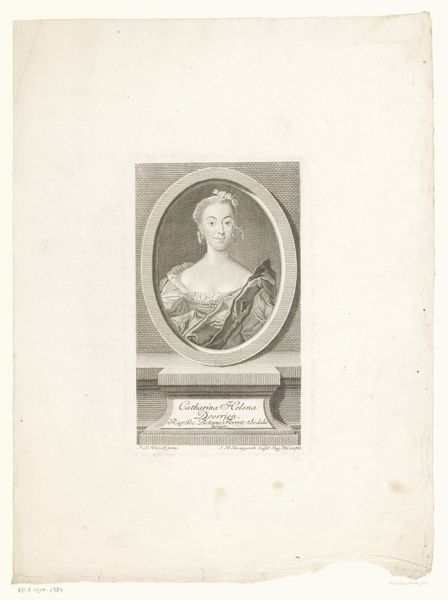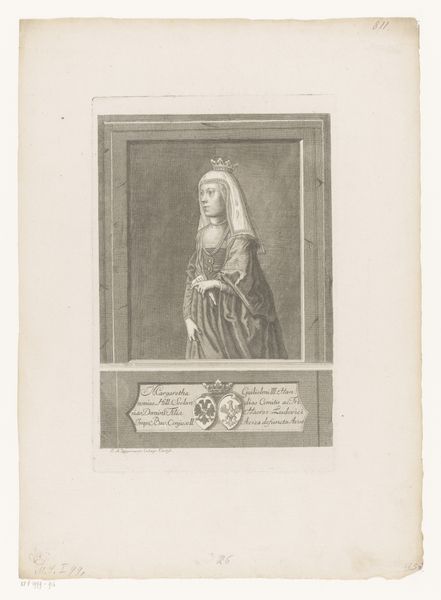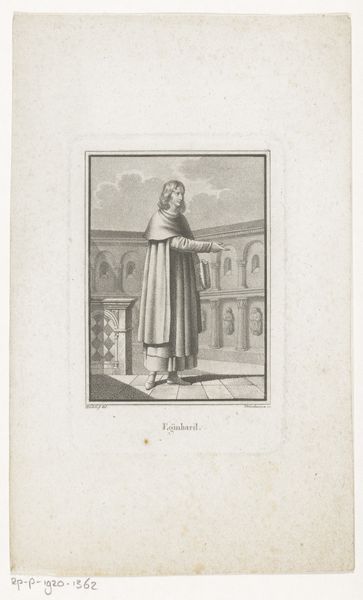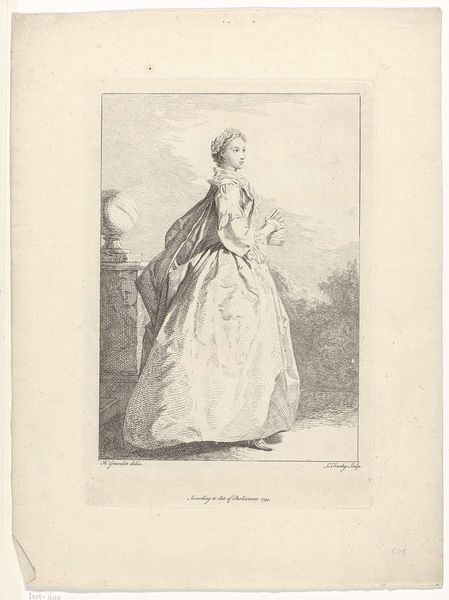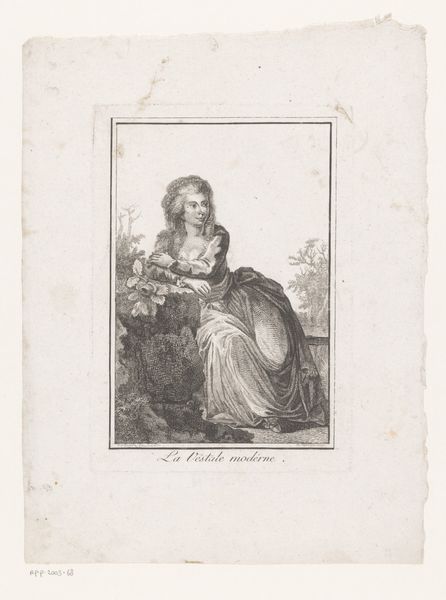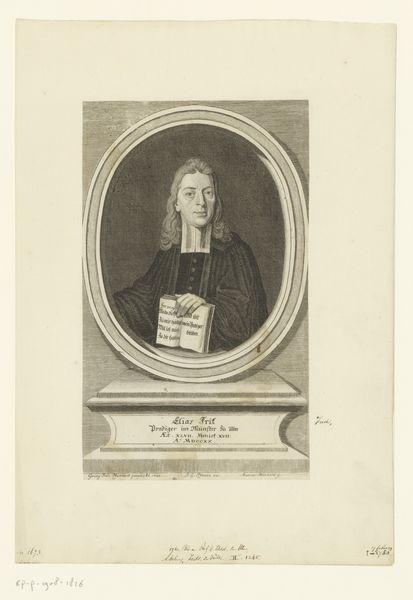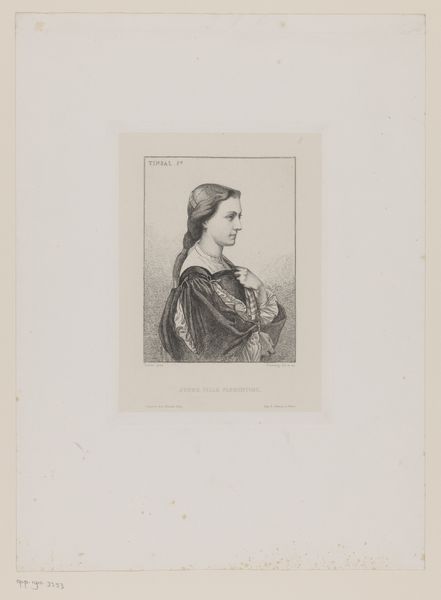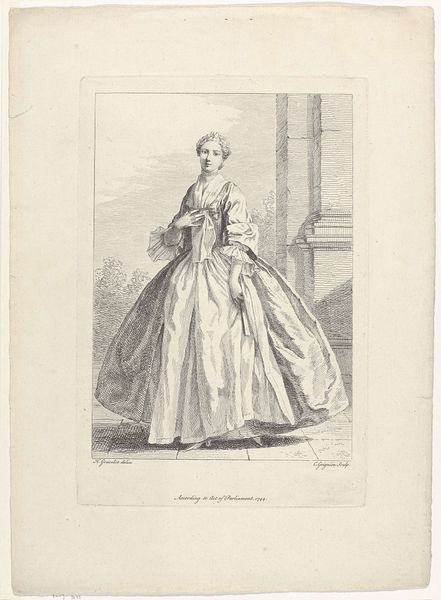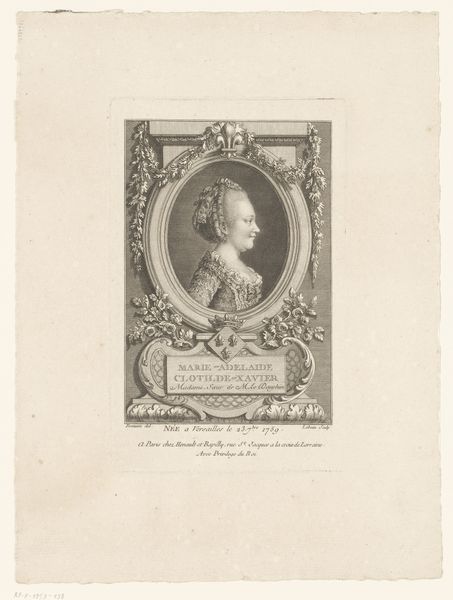
Dimensions: height 166 mm, width 120 mm
Copyright: Rijks Museum: Open Domain
Curator: The quietude radiating from this print really gets to me. It’s almost meditative. Editor: Indeed. What we’re looking at here is an engraving entitled "Standbeeld van Marie d'Orléans, hertogin van Württemberg," or Statue of Marie d’Orléans, Duchess of Württemberg, made sometime between 1837 and 1868, after a sculptural work by Carl Mayer. Curator: Ah, Mayer! His line work is exquisite. She has such a poised yet melancholy air. Makes you wonder about the sculptor’s headspace when they conceived it. Did he capture her spirit, or did he impose a feeling upon her? I love how the shading lends it an almost dreamlike quality. Editor: Absolutely. Marie d'Orléans was, in her own right, an accomplished sculptor. So, it seems that Mayer, as the printmaker, tried to pay homage to both the Duchess’s legacy and the tradition of sculpture itself by mimicking the style and substance of the original form. We see clear influences of both Classicism and Romanticism, reflecting the aesthetic values of the era. Curator: There’s also this tension between the softness of her features and the almost severe geometry of the base she’s standing on. It adds such drama, don’t you think? It asks the question: What elevates a person in history? Is it strength? Beauty? Title? Talent? All of these? Editor: That tension is reflective of broader power dynamics at play within the 19th century. The print not only immortalizes a Duchess, but, as a reproductive print, also makes this status legible and accessible for a growing public, cementing notions of class and nobility. Think about who consumes such imagery. What ideas are circulated in society when we render this woman—this powerful woman—as statuary? Curator: Food for thought, for sure. And a compelling glimpse into a distant world. For me, the artistry transcends its historical moment and lets us grapple with universal human feelings, the search for grace and maybe an echo of sadness in an aging world. Editor: Agreed. By examining how this piece simultaneously immortalizes and reproduces images of powerful people, we gain a deeper understanding of art’s complicated role in preserving power and privilege through cultural memory.
Comments
No comments
Be the first to comment and join the conversation on the ultimate creative platform.
